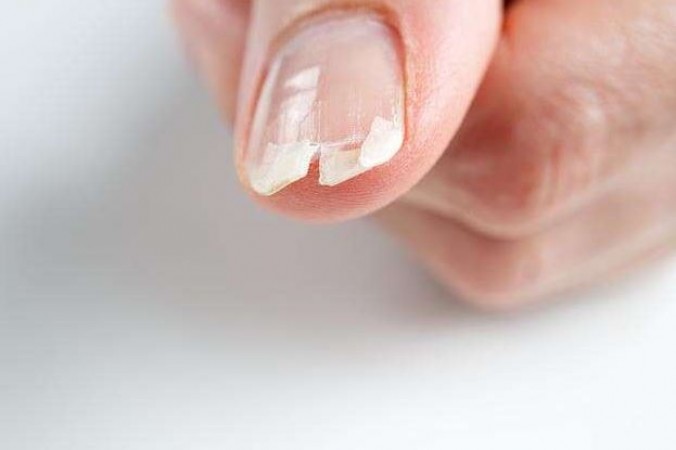
Beautiful and healthy nails are not just a fashion statement but also a reflection of overall well-being. However, many individuals face the challenge of brittle and easily breakable nails, which can be both unsightly and potentially harmful. This comprehensive guide aims to delve into the various causes of nail breakage and provide detailed tips on effective nail care.
Causes of Nail Breakage:
Aging Effects on Nails:
As individuals age, the impact of aging extends to various aspects of health, including nail growth and strength. Understanding how aging affects nails is crucial in developing strategies to counteract the natural wear and tear.
As we age, the body's ability to produce essential proteins, like keratin, responsible for nail strength, diminishes. This results in slower nail growth and increased susceptibility to breakage. Additionally, reduced blood circulation to the extremities can contribute to weakened nails. Implementing a targeted care routine becomes essential to support and maintain nail health as we age.
Prolonged Water Exposure:
Extended exposure to water, whether through household chores like dishwashing or frequent handwashing, can lead to weakened nails. The constant wet-dry cycle affects the nails' hydration levels, making them more prone to becoming brittle and breaking.
Water exposure softens the nails, making them more susceptible to damage. The repeated expansion and contraction weaken the nail structure over time. To mitigate the impact of prolonged water exposure, individuals should consider incorporating moisturizing routines, wear protective gloves during tasks involving water, and adopt practices that promote nail hydration.
Underlying Health Conditions:
Certain health conditions, including eczema, psoriasis, and lichen planus, can adversely affect nail health. Identifying these underlying conditions is crucial in addressing the root cause of nail breakage.
Health conditions like eczema and psoriasis can cause inflammation and affect the nail matrix, leading to abnormal nail growth and increased fragility. Lichen planus, an inflammatory skin condition, can also impact the nails. Furthermore, hypothyroidism, characterized by an underactive thyroid, may contribute to brittle nails. A holistic approach to health, including consultation with healthcare professionals, is essential for managing these conditions and preventing nail breakage.
Iron Deficiency:
A lack of iron in the body can result in weakened and brittle nails. Recognizing the signs of iron deficiency is vital for maintaining overall health and preventing nail-related issues.
Iron is a crucial component for the production of hemoglobin, which carries oxygen to the body's cells, including the nail matrix. Insufficient iron levels can lead to decreased oxygen supply to the nails, resulting in weakened and brittle nails. Spoon-shaped nails, known as koilonychia, may indicate severe iron deficiency. Regular monitoring of iron levels and incorporating iron-rich foods or supplements can help address this cause of nail breakage.
Harmful Chemicals in Nail Products:
Regular use of nail polish and other nail care products containing harmful chemicals can contribute to weakened nails over time. Choosing safe and chemical-free alternatives is essential for preserving nail health.
Many commercial nail polishes and nail care products contain harmful chemicals such as formaldehyde, toluene, and dibutyl phthalate. Continuous exposure to these chemicals can strip the nails of their natural oils and contribute to brittleness. Opting for nail products labeled as "3-free" or "5-free," meaning they are free from certain harmful chemicals, can significantly reduce the risk of nail damage. Additionally, allowing the nails to "breathe" by taking breaks from nail polish can promote overall nail health.
Nail Care Tips:
Moisturizing Nails:
Regularly moisturizing the nails is crucial for preventing dehydration and enhancing their flexibility. Various moisturizing agents, including creams, serums, and natural oils, can be effective in maintaining nail health.
Applying a moisturizing cream or serum to the nails and cuticles helps replenish lost moisture, preventing them from becoming dry and brittle. Massaging natural oils such as coconut oil or olive oil onto the nails before bedtime not only moisturizes but also improves blood circulation to the nail bed. This promotes healthier nail growth and reduces the risk of breakage.
Protective Measures:
For individuals engaged in activities involving prolonged water exposure, adopting protective measures such as wearing silicone gloves can act as a barrier, shielding both the skin and nails from the harmful effects of excessive moisture.
Silicone gloves provide a protective layer that prevents direct contact between the nails and water, reducing the risk of softening and weakening. This is particularly important during tasks like dishwashing or cleaning, where hands are exposed to water for extended periods. Implementing protective measures helps maintain the structural integrity of the nails and minimizes the likelihood of breakage.
Understanding the multifaceted reasons behind nail breakage is the first step towards effective prevention and care. By addressing the impact of aging, mitigating the effects of prolonged water exposure, managing underlying health conditions, addressing iron deficiency, and choosing safe nail products, individuals can proactively enhance the strength and appearance of their nails. Implementing a comprehensive nail care routine, including moisturizing and protective measures, ensures that nails remain resilient and contribute to overall well-being.
Eat these things in winter, you will get plenty of protein
Workday Workout: Stay Fit and Focused with These Desk Exercises
Pregnant women should drink this drink in winter, both mother and child will remain healthy